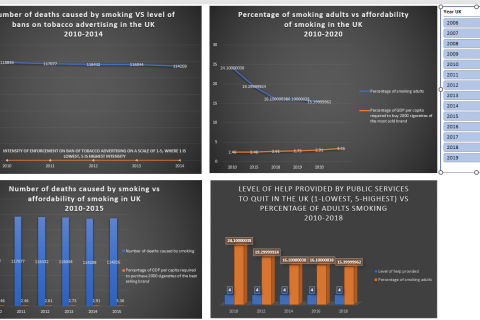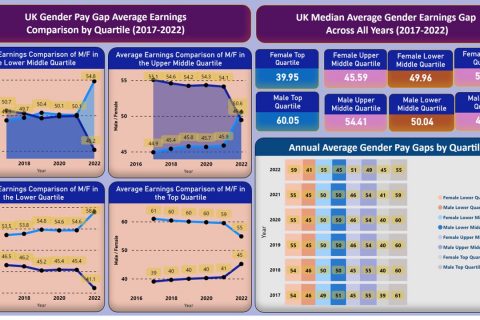
UK vs Denmark Gender Pay Gap investigation
The Women in Data and Digital Innovation were given a brief to plan, develop and evaluate a showcase project. They were given a free reign over subject matter, and some of the projects have been nothing short of outstanding.
Except from the Planning Stage for this project:
In this project, I am going to be looking at the Gender Pay Gap in the UK and comparing it to Denmark.
The gender pay gap is the difference between what men and women are paid. It is comparable between all jobs and isn’t defined by job roles. ‘The gender pay gap is calculated as the difference between average hourly earnings (excluding overtime) of men and women as a proportion of men’s average hourly earnings (excluding overtime)’ (Office for National Statistics).
Background and Benefits
I have chosen to look into the gender pay gap in the UK and in Denmark. I have chosen these two countries because of their differing views and policies on childcare.
Denmark is well known for being a forward-thinking country with great policies in place for childcare, which the UK lacks. I believe that having good childcare policies in place for all children would enable more mothers to return to work, hopefully helping to reduce to gender pay gap.
In Denmark, the guaranteed day-care availability ensures that all children from 26 weeks until school age are entitled to be enrolled in a day care facility (European Commission). The local authorities cover a minimum of 75% of the fees for this, meaning parents only pay a maximum of 25%. Whereas in the UK there is no funding towards costs or guaranteed places for under 3’s (Some are eligible for funding from age 2, but this is benefit dependent). Therefore, many mothers are forced out of work to care for their children.
A lot of the issues we have with the Gender Pay Gap in the UK can be related to the Motherhood Penalty. Henley Business School states ‘The motherhood penalty impacts on aspects of women’s careers such as pay, promotion and the ability to gain good quality employment’ (Henley Business School).
In March 2023, PWC UK stated that motherhood penalty is now the most significant driver of the gender pay gap (PWC UK). It is believed that up to 80% of the gender pay gap is a result of the motherhood penalty (Henley Business School).
As a mother with with 2 young children, I have found myself in this exact situation before and genuinely believe that something needs to change in the UK. If childcare was more accessible here, many more mothers would be able to return to jobs that they currently are unable to. This would hopefully see a positive change in the gender pay gap.
More needs to be done to help mothers return to work in the UK and I hope that my findings in this project will show the affect that helping mothers return to work can have on the gender pay gap overall.










